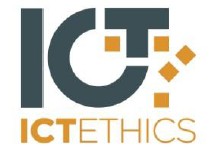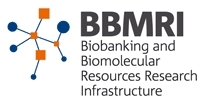EPINET Wearable Sensors
- Embedding workshop
- Bring into contact different and possibly incompatible perspectives and viewpoints.
- Explore and clarify the diversity of experience in researching the innovation domain in question.
- Explore and clarify the diversity of interests in reference to a small set of policy-relevant concerns of the case study team.
- Explore and clarify points of convergence and complementarity among different professions and expertise in shaping more broadly focussed evaluations of the state of the art and what the future could be like.
- Policy recommendations
- Reform in healthcare delivery across Europe comes with great emphasis on more personalised care, patient choice, private insurance and personal responsibility.
- Personalised care is shifting roles, relations and responsibilities in care-giving.
- Mass marketing of smartphone-enabled apps and accessories are blurring the boundaries between healthcare, self care, fitness and well-being applications.
- New service 'hubs' for mobile data gathering and the processing of health-related and potentially sensitive information, are a challenge to the protection of privacy and personal data.
Collaborators:
Lancaster University (Cesagen): Kristrún Gunnarsdóttir, PI
JRC -Joint Research Centre- European Commission: Ângela Guimarães Pereira, Melina Breitegger & Lucia Vesnic-Alujevic
University of Bergen: Kjetil Rommetveit
University of Sussex: Kate O'Riordan & Aristea Fotopoulou
Vrije Universiteit Brussels: Niels van Dijk
Assessment methodologies: ethics, law, media studies, knowledge assessment (pedigree analysis), socio-technical evaluation.
See more information and research output
The use of wearable sensors for health, fitness and well being, is intimately tied in with recent shifts toward more personalised care, patient choice and self care. This case study has focussed on wearable sensors in relation to an emerging market rather than simply an emerging new domain of technological innovation in healthcare. It has focussed on them as consumer products and services, evolving from lead-markets of specialised practices and affluent consumption toward mainstream marketing of smartphone-enabled apps and 'hubs' for mobile data gathering, processing and communication. We observe an emerging ecology of devices and services, operating across the spectrum of healthcare and self care. We observe that the 'monitor-and-measure' of health and fitness-related statuses results in new kinds of informational bodies and selves, along with high expectations of data gathering and data sharing for the benefit of self-trackers. We observe new fronts for knowledge dissemination that encourage this trend, and that media coverage communicates big visions about the future of medicine and innovation in consumer electronics. Novel service designs play a central role in this development, but so does citizen self care activism in self-tracking and self-hacking with focus upon open data and privacy protection—the question of who owns the data and what can be done with it.
Making sense of wearables: New-emerging markets and mediascapes was an embedding event held in Brussels, 5 Nov 2013. The aim was to involve professionals and activists from a range of public and private agencies involved in the development of wearable sensor technologies and ICT innovation policy.
Provisions for the delivery of healthcare to European citizens have been under review for some years (e.g. ESF Forward Look, 2012). Among other things, the trend is toward more patient responsibility, more choice and greater precision in medicine. But reform in the organisation and delivery of care is often instigated by tightening budgets as much as by increasing and changing demand for care. Changes in priorities are already affecting the ways in which roles, relations and responsibilities are defined and delegated in care-taking. Provisions of care are shifting from public provisions to private investment, from healthcare to self care, away from clinics, into the home and toward so-called mobile health (mHealth).
Key aims of the embedding workshop:
Gadgets on the move and in stasis: Consumer and medical electronics, what's the difference?. is the title of the summary of our findings and policy recommendations. Wearable sensors for health and self care, fitness and well-being, blur the boundaries between healthcare and the self-administration of care when patients begin to actively self-monitor using wearables and biosensors as part of ongoing care. They shift these boundaries when consumer electronics are marketed and put to use for medical purposes—devices which then sit in a policy vacuum since there is no adequate legal framework with binding rules to cover consumer gadgets in medical settings (Green Paper on mHealth, 2014). Yet, the boundaries are drawn quite clearly when wearable sensors are marketed for quasi-medical purposes, for which the HTA frameworks and the European medical devices directive do not apply. Moreover, wearable sensors, whether or not they classify as mHealth technology, are not indiscriminately on the move. In fact, their flexibility is confined to prescription: that of structured activity, of locality, stasis and types of measure and monitoring built into them, including standards on data capture and data processing.
Policy-relevant considerations:













